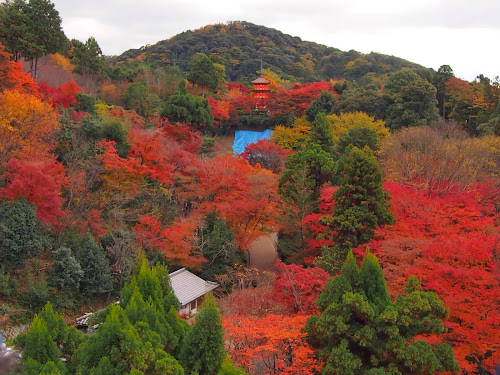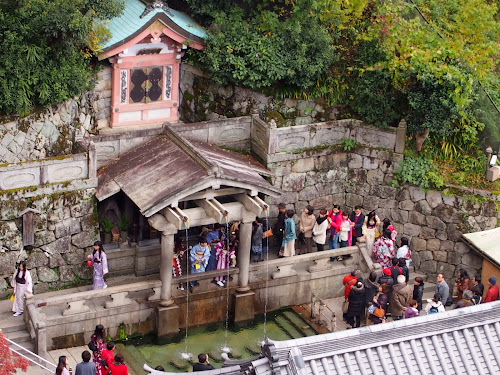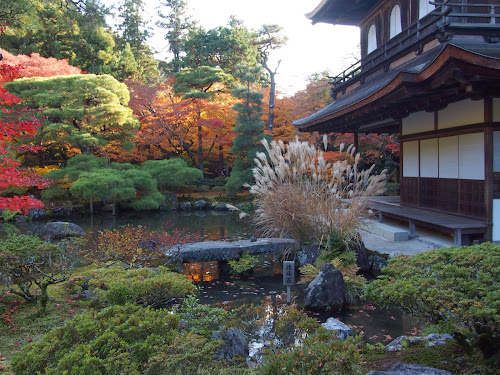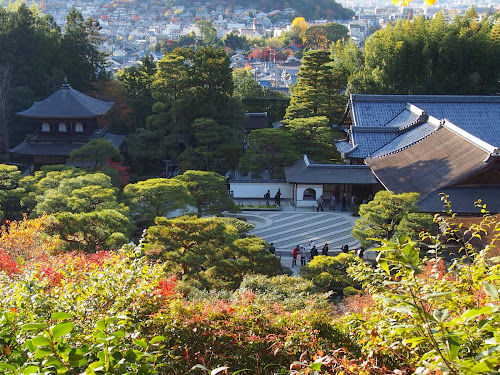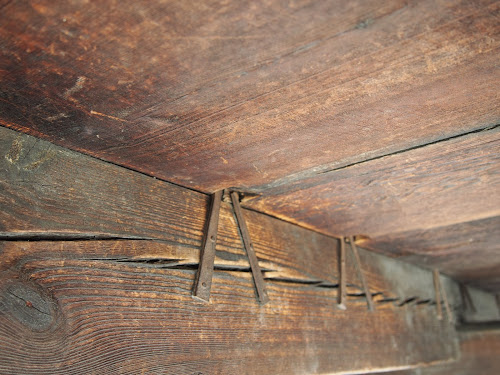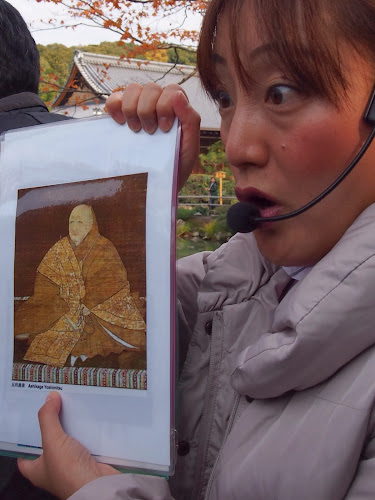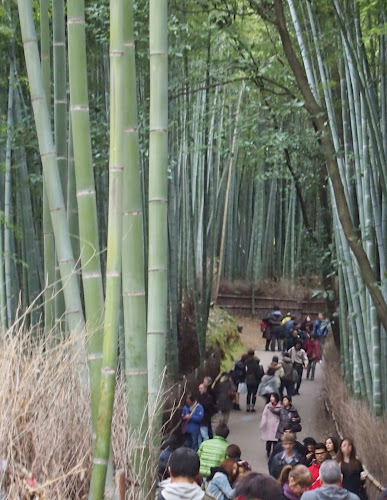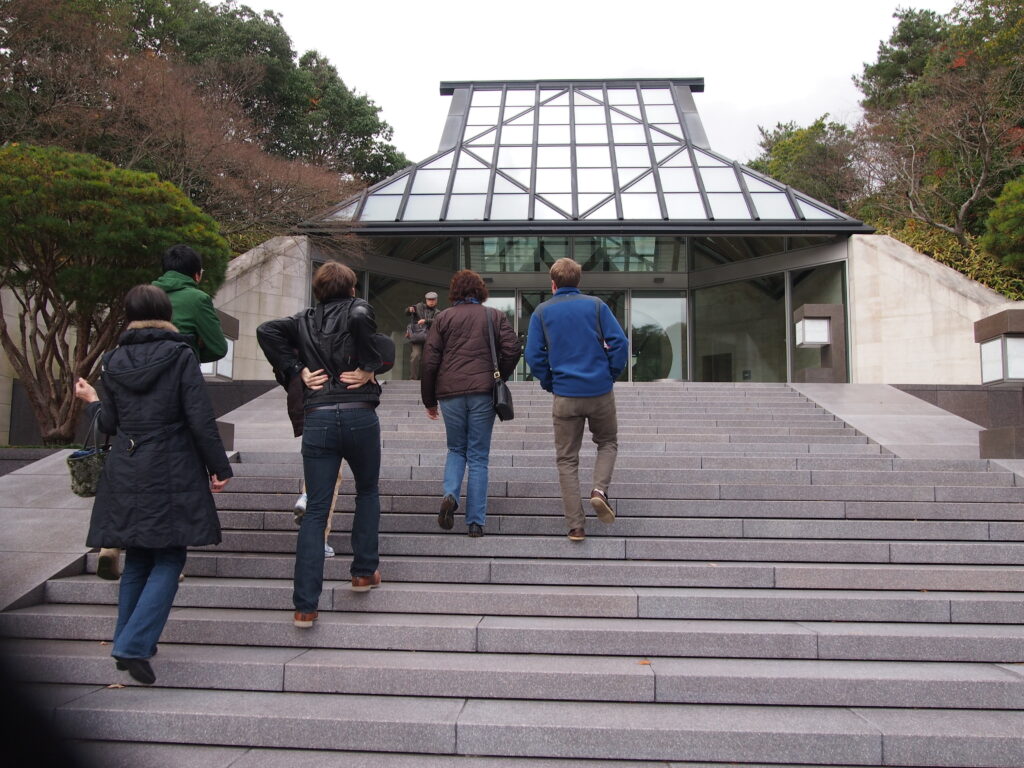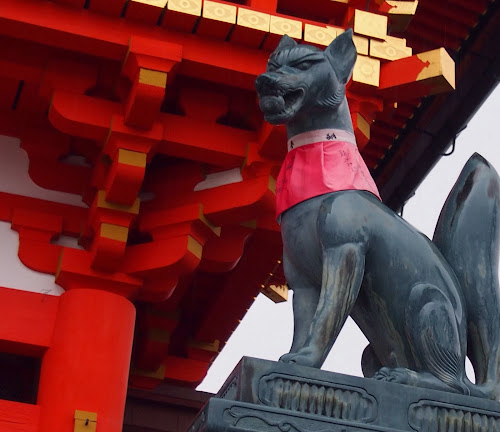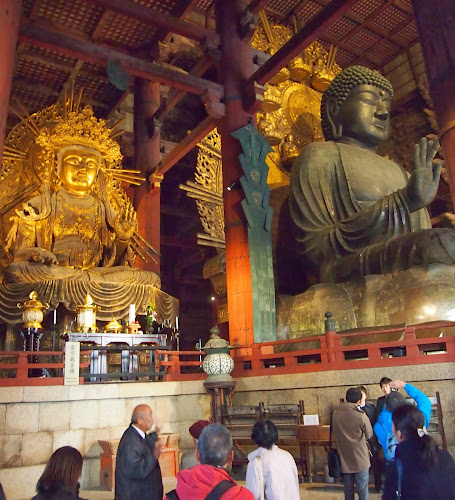Reflecting on our recent trip to Japan, we felt there were a few things worth sharing that hadn’t made it into a posting. Read on.
On Actually Wearing a Kimono
Going to our fitting at the local kimono shop, I had no idea what wearing a kimono actually involved.
When I arrived at the venue, the owner of the kimono rental shop met me with three attendants from the venue. Starting with a t-shirt and leggings, they proceeded to wrap four thin white hand towels around my neck and waist, secured in place with surgical tape. Next came a kimono style slip secured with a plain sash. It was pretty tight, but when asked while sucking in my stomach, I assured them that it was fine. Next came the kimono I selected. (I had chosen one with bright red accents. Of course, I was later told that it was a kimono for a younger woman, but I wore it well.)
The kimono was hiked up in the back, then secured in place with another plain sash. This time I mentioned that maybe it was a little too tight, but was told that that particular sash was an important one. So, I sucked it in a little more. The final touch was the obi sash. A stiff piece of cardboard was concealed in the fold in the front and there was a little pillow under the knot in the back. It took two attendants, pulling and pushing, to get the whole thing in place. With perfect posture guaranteed and walking limited to dainty small steps, I was ready to go. There was one more thing the kimono owner needed to tell me: what I needed to do if I had to go to the bathroom. With that explanation, I decided that I just wouldn’t need to go.
I did feel glamorous and, in spite of the discomfort and giggles from some of the Japanese people at the venue (not at our party), it is something I am glad I did.
The Up-do
The owner of the kimono rental shop diplomatically let me know that my short wavy hair wasn’t going to work with the kimono and asked whether or not I would let the attendants at the venue style, and therefore touch, my hair. I assured her that it was all good. The hairdresser worked her magic, first with hot rollers, then teasing and securing my hair in place with a lot of bobby pins and hair spray. I was amazed at the result; I looked like I had long hair put up in an elegant up-do. My curly hair was tamed, but afterwards it took two washings to get all of the hair spray out.
Thinking about Toilets
It’s something all of us need for at least a once-a-day engagement. And, the toilets in Japan are not a straightforward subject. They are found at two extremes, the ultra-modern and the bare minimum. The ultra-modern or “western” toilets go beyond the standard two flushing options to include heated seats, a bidet feature, a derriere washing option, a deodorizer spray and a sound option that runs water to mask any bodily sounds. The guidebook we consulted cautions: do not get up until the water stops. An in-home version of this toilet can also include a small sink above the tank doing double duty as water flows for hand washing and then drains to fill the tank for the next flush. At the other extreme is what the guides on our trip to Russia referred to as a Japanese toilet. It is a porcelain trough in the floor with a flushing option. It was my experience that in public restrooms, Japanese style toilets outnumbered “western” toilets even in recently constructed buildings. Remember my quick resolve to avoid the need for a toilet while wearing a kimono? Use your imagination, but since all ages use this form of toilet, their legs will remain fit (it’s a “two step” in other parts of the world). In either case, the public restrooms were consistently very clean wherever we went (even at McDonald’s) , and free (unlike, for example, France). Generally there were no paper towels and only feeble, if at all, electric hand dryers, so women carry a small hand cloth in their purses, terry on one side and a marvelous Japanese print on the other.
Japanese – Language Lessons
First of all, it ain’t easy. Learning a few Japanese phrases (enough to behave somewhat politely, but not actually communicate with anyone) isn’t all that difficult. The sounds you need to make are pretty straightforward, at least to the point where listeners think they know what you’ve just tried to say. However, reading the language is insanely difficult. We have immense respect for Kyle and the undertaking on which he has embarked to become not only a proficient speaker, but a reasonably literate person in Japanese.
If you count Arabic numerals separately, English speakers use two writing systems: Roman letters and Arabic numerals. Counted the same way, speakers of Japanese use five. Fortunately for us, they use Arabic numerals. They also use Roman letters when throwing odd bits of often nonsensical English or other European phrases into signage or onto clothing. A way of writing syllables called Hiragana is used to write traditional Japanese words and it’s the system that kids start out learning in school. A different way of writing syllables called Katakana is used to write words that have been borrowed from other languages. Can you imagine using a different alphabet to write words in English that were derived from French, Latin or Greek? Then there is a completely different set of symbols that don’t represent syllables, they represent ideas. To write Japanese you need to master a set of symbols called Kanji that were derived from Chinese writing. In order to be literate, you need to be able to recognize and write over 2,000 of them. Moreover, they are quite important and enable you to distinguish between different ideas that sound the same and are written the same if rendered in Hiragana.
Kanji are also ubiquitous. Having studied a bit of Hiragana to help us sort out signage while traveling on our own, we were dismayed on the ride into Tokyo from Narita airport when we noticed that “Tokyo” was written on the highway signs in Kanji, not in Hiragana. Interestingly enough, on the local trains the writing indicating the names of stops is first in Kanji (large and prominent) with smaller writing adjacent for those not fluent in Japanese in Roman letters and in Hiragana. So, if you are a young school child who hasn’t mastered sufficient Kanji yet, you can make out your stop in Hiragana.
Getting Around in Japan
We saw quite a few young school children (early elementary school) riding the trains either in small groups or completely alone. This says two things about Japan. First, it is a very safe country where parents don’t hesitate to allow young children to go about on their own. And, it has a very reliable and comprehensive public transportation system.
Other than recognizing that we frightened little children whenever they spotted us and attracted the curiosity of young and old alike, we felt very comfortable making our way around both Tokyo and the Osaka/Kyoto area. Most people were very courteous and friendly. Quite a few were indifferent, but no one was unfriendly or at all hostile (something that can’t be said about traveling in quite a few countries).
It’s finding a building, however, that can make getting where you want to go a challenge. We discovered this when looking for specific stores or galleries when someone had not drawn us a map. Japanese people also find it to be challenging. The reason? Rather than identify buildings by the street or road on which they are situated and then by sequential numbers from one end of the street to the other, the Japanese have a totally different system for identifying buildings. Often, in our experience, the basic starting point isn’t a street, but a neighborhood. Then, starting with that street or neighborhood, there are sectors that are numbered in the order they were developed and then another set of numbers that identify the buildings in that sector by reference to when they were built. So, “3” refers to the third building constructed. Obviously, they aren’t going to be in any particular order walking down the street. So, the best thing to do is use your smart phone to find a website (in English) that has a map, i.e. use GPS (although your usual map program may take you in the wrong direction).
Another thing we discovered was that a well-meaning hotel clerk can send you on an impossible errand. One of the clerks at our hotel in Tokyo (which we loved) was kind enough to give us directions to a very good katsu restaurant. The problem was that he wrote the name of the restaurant in Roman letters. The restaurant didn’t have any signage in Roman letters, only in Kanji. We went up and down the street, trying to figure out which restaurant we were looking for. We asked passersby. No one could figure it out. Finally, we went into a likely looking place and asked if it was the place we were looking for. No, but a customer at the restaurant was consulted and he left his table and walked us down the street to the restaurant that had been recommended to us (and that we thoroughly enjoyed).
Finally, the streets themselves are consistently much more narrow than anywhere we’ve been. Having lived for a time in Europe, a number of two-way streets in Japan would be designated as pedestrian zones in Europe. One close to where we were staying was so narrow taxi drivers were unwilling to drive down it. Some were defined by steep, straight-edged gutters on one side or both. We were cautious walking in those streets and can’t imagine driving on them. A key difference with Europe is that there the insanely narrow streets are from the Middle Ages. In Japan, they are from the latter half of the twentieth century.
















